Welcome back. Today I have a story about a running-camp experience and also a training update two months ahead of a 50-miler and four months ahead of the Hardrock Hundred. Later today (Wednesday, March 12) I’m meeting online for a chat with paid subscribers. Please upgrade your subscription to the supporter level if you’d like to be a part of it!
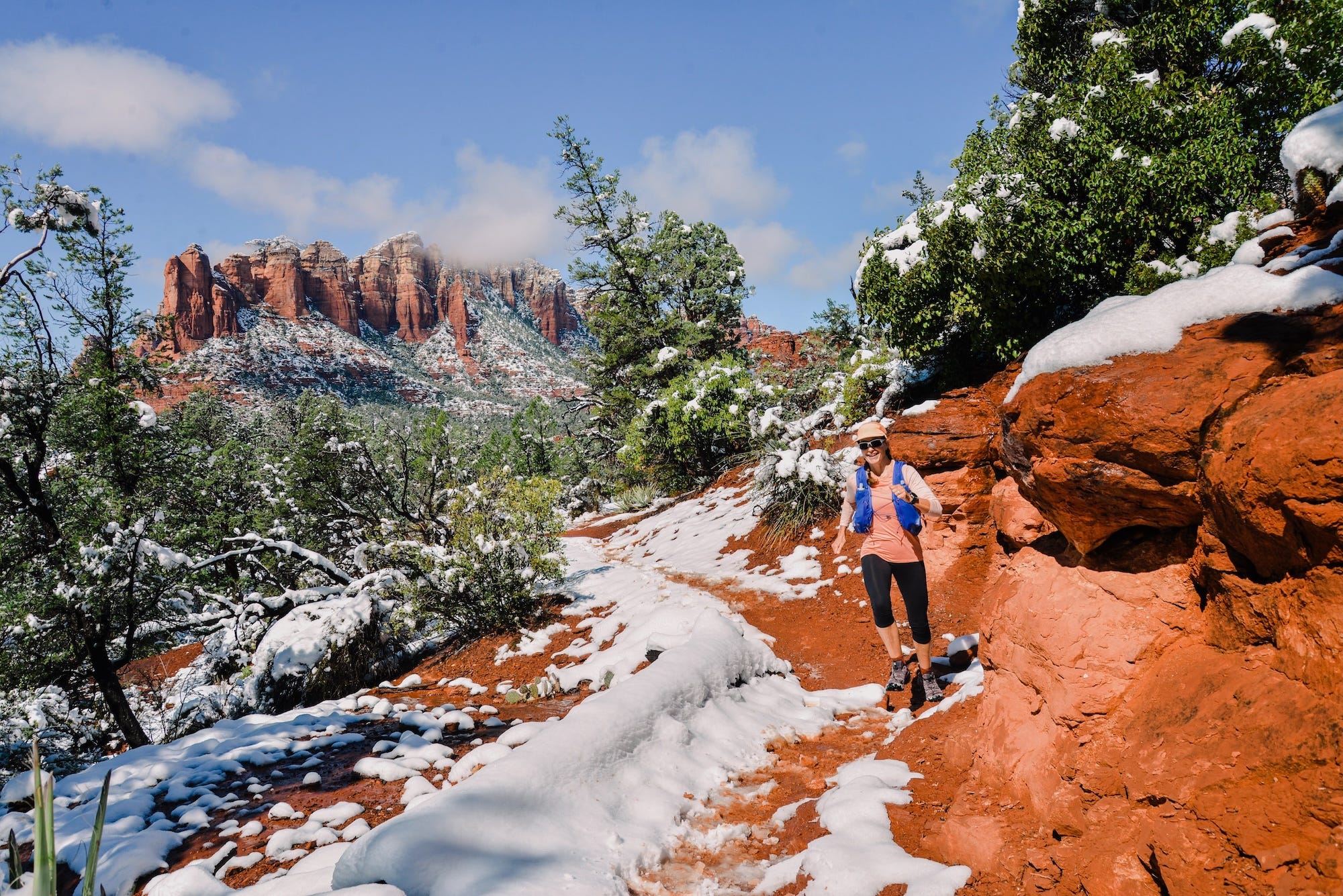
In every direction, white snow contrasted with red rock and blue sky. Snow fell from juniper and manzanita branches with a soft plopping sound while runoff from snowmelt burbled like a fountain as it flowed over slickrock. The abundance of moisture—maybe a once-a-year rarity in the high desert of Sedona, as unusual as the glitter I let someone apply to my cheeks even though I generally don’t go for glitter—soaked my shoes and socks as I hiked up a steep single-track trail with seven other glitter-cheeked trail-running women.
The only unnatural sensation came from the buzz of the watch on my wrist. I had set the Garmin Fenix 7 to auto-pause mode so it would stop with a buzz when I stopped, because I knew this kind of group running entailed a lot of breaks to regroup. I had wanted to measure moving time and not factor in all the standing-around time, because I cared about moving pace and mileage—but why? Because I’m still, after three decades at this, a serious runner training for races, and I wanted to gauge my average pace and hit a certain mileage.
But then the watch became stuck on auto pause as I hiked upward with the group, because the GPS couldn’t detect locomotion so slow and vertical. For about a quarter mile, it stayed paused and therefore did not measure forward movement, which meant that segment didn’t count for my day’s total. This happened again a ways up the trail—I steadily hiked, but my steps didn’t record.
What could I do? I could’ve pushed myself to jog upward, elbowing past the trip leader, to get the watch recording again so that every small fraction of a mile counted toward my volume total. As I imagined that ridiculous jackass scenario, I looked around at the stunning scenery and did the exact opposite: I moved even slower to let others catch up, and then I hiked behind them while looking around and taking in the views. To my watch, I said, “You can’t measure joy.”
The group run was part of a five-day trail-running camp in Sedona, Arizona, and I took part in it for that kind of aha moment of relaxing and rediscovering fun and camaraderie while running.

To succeed at my upcoming big mountain ultras, I need to chill out and lower my stress level and self-criticism about performance. Otherwise, my stomach surely will turn, my lungs may develop respiratory problems from the prolonged stress of breathing too hard (as they have at other high-altitude hundreds), and I’ll spiral downward with negativity and impatience about my midlife slow pace, all of which will sabotage my endurance and could make me quit.
This camp’s group runs in the wintertime desert reminded me how to cultivate the patience and joy—and the heart—I need for ultras (and for life, really).
I have attended performance-oriented running camps before (like this excellent one) filled with workshops and high-mileage group runs divided into different pace and ability groups, which challenged me to keep up with the others.
This camp, organized by Red Desert Trail Camps, was not at all like that. It featured a lot of downtime, yoga and journaling, minimal coaching, playful and exploratory group runs over gorgeous terrain, and plentiful meals and snacks, all of which I wanted and needed. The runs were not too long (8 to 10 miles at most), and I added a solo Saturday afternoon run for a longer total that day.
The experience felt like a retreat insofar as it emphasized self-reflection and personal restoration as much as productive activity. I slept, read, wrote, ate, and ran. I loved having a laid-back schedule, a chef who cooked for the group, and two coaches who planned and led the routes. One was my runner friend Cristal, who paced me in my last 100-miler and took the lead for our group. The other was Amy, a runner and conditioning coach who brought up the rear to make sure no one was left behind. She wore a pink running hat that said “Party Pace,” which captured the group’s spirit.
For me, these desert runs felt like a celebration of running again, after the run-stopping injury November 2. After three months of very reduced activity and PT, I’m finally running normally, and my injury spot feels fully healed, which feels like magic. Of course, my almost-56-year-old body expresses other aches since I’m rebuilding fitness, but the spot at the head of the left tibia where the IT band attachment partially tore and detached no longer “talks to me” nor makes me wince on steps. On the Sedona trails, I rediscovered some rock-hopping agility, no knee pain to limit big steps.
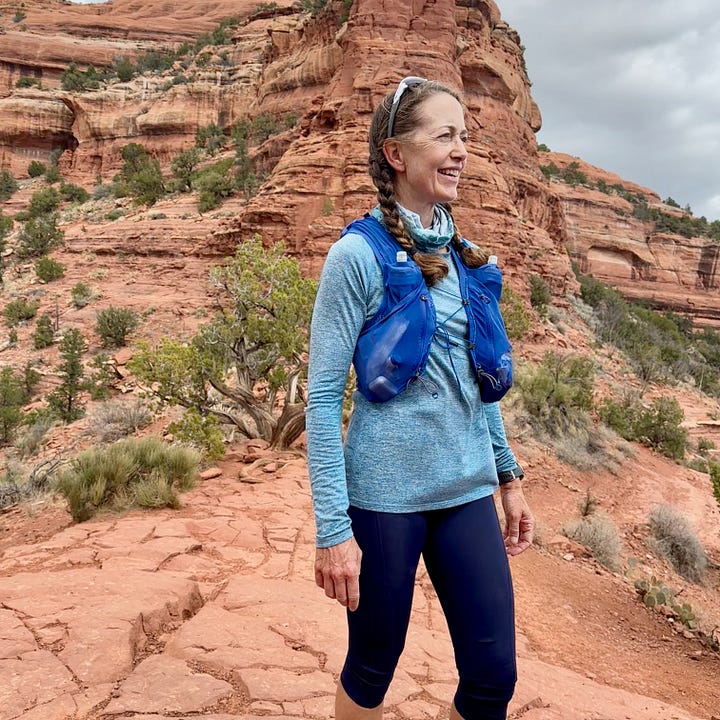
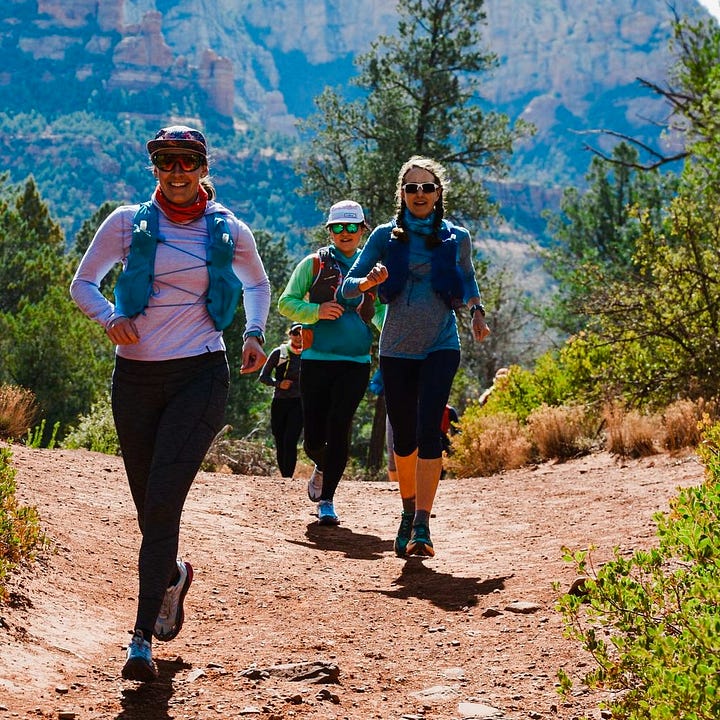
Throughout Friday, it snowed five to six inches—more than the area’s typical annual snowfall in one day! We were game to hit the trail, and we hiked a challenging loop through fresh, slippery snow. Then we bailed for safety and made the best of running around neighborhood streets. It was silly-fun.
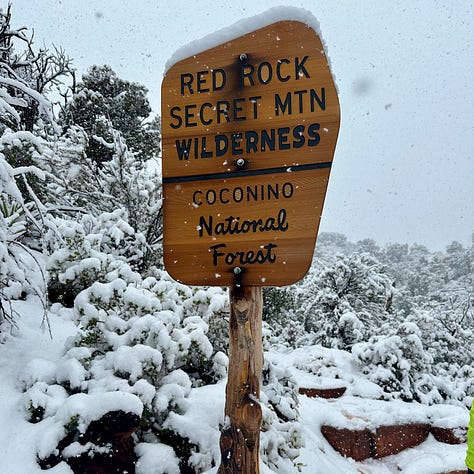
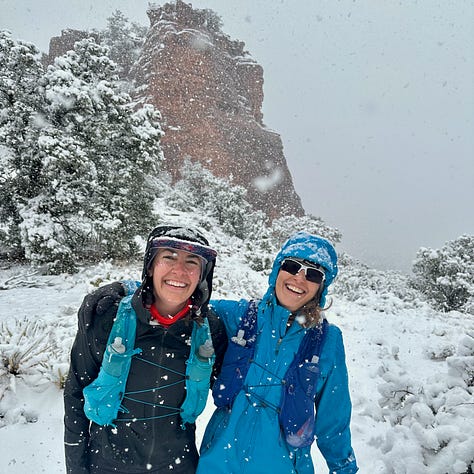
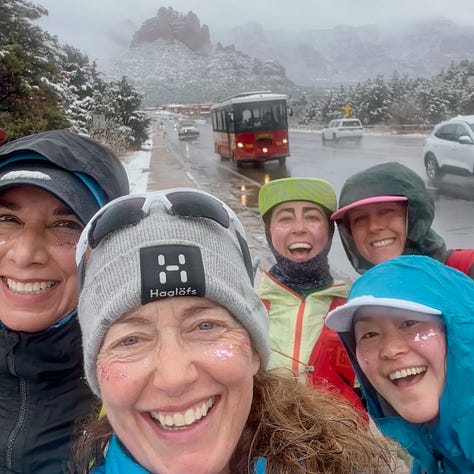
During my time with these women, I kept myself open to trying new things and learning. Admittedly, I can fall into “I’m an old pro” and “can’t teach this dog new tricks” ways of thinking. I picked up several tips, however, not just running-related, but having to do with the Gaia map app, baking sourdough, and certain yoga poses.
The biggest takeaway was a change in shoe choice. I’ve been wearing Hoka Stinsons for years, constantly replacing them and complaining that their tread wears out too fast but sticking with them because I like the feel underfoot. A Hoka rep visited the camp Thursday morning with a bunch of demo shoes. He suggested I switch to the Hoka Mafate because it’s similar to the Stinsons but features a grippy Vibram brand sole with better traction that won’t wear out as fast as Hoka’s in-house sole. I tried it and felt a positive difference. It gave me more confidence to run slippery slickrock. (I’m also experimenting with Salomon Speedcross 6 for grip and like them too.)
And get this—I’ve been wearing the wrong size! Years ago, I sized up a half size to take into account my feet swelling during the weeklong self-supported Grand to Grand Ultra. For daily running and single-day ultras, however, I don’t need that roominess. Going down a half size made my feet feel more secure in the shoes.
The point is, sometimes it’s worth questioning your choices if you always choose the same-ol’-same-ol’.
I highly recommend Red Desert Trail Camps both for beginner trail runners and for those who, like me, want to regain a beginner’s mindset of discovery and excitement. (Note: their camps are for women only.) For a camp that combines backcountry running with writing and Zen practice, I also suggest checking out those organized by Katie Arnold, which I have not attended but heard good things about her gatherings.

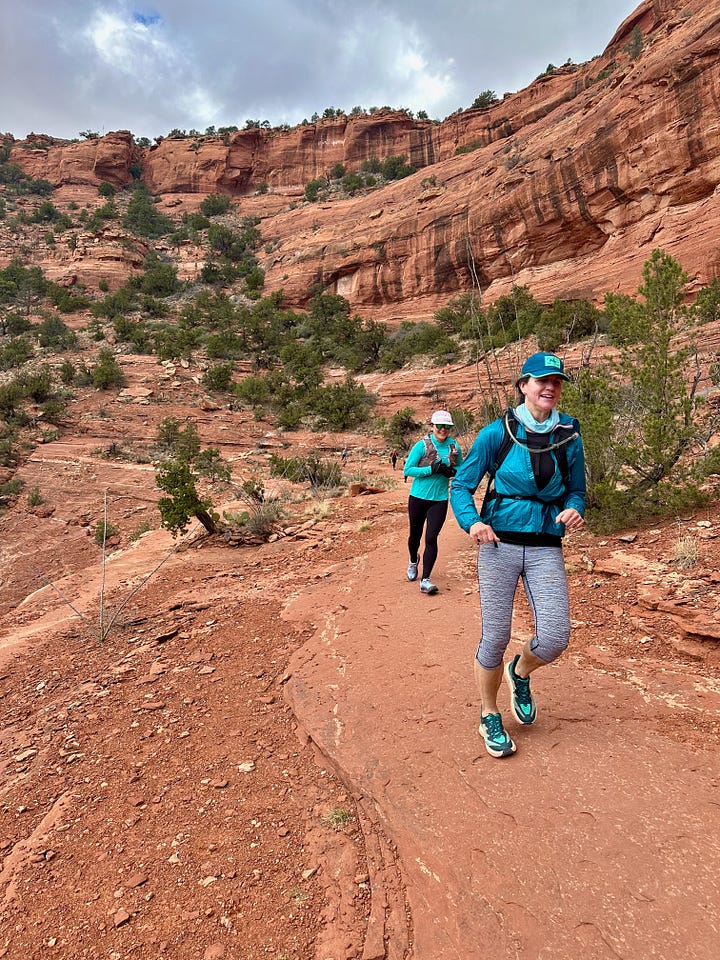
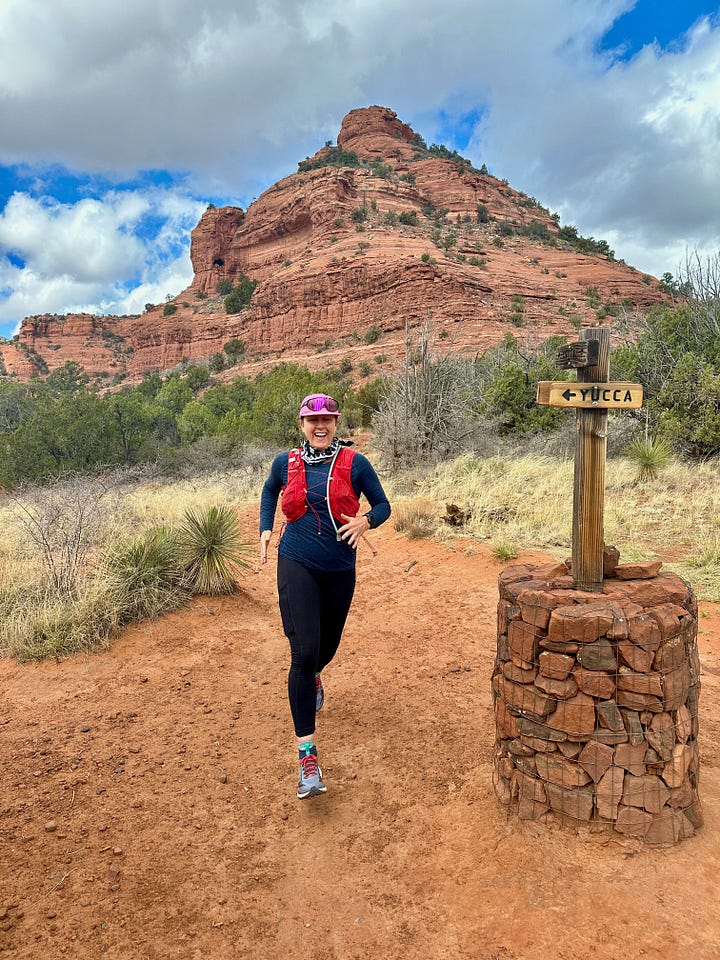
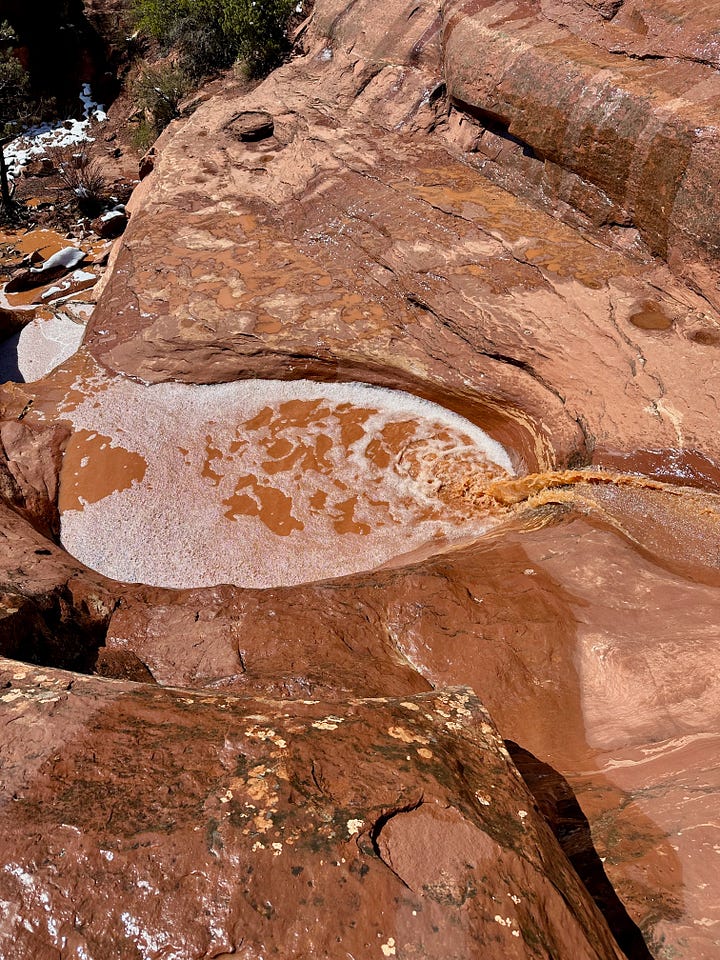
Training countdown
Last week, I enjoyed watching Hilary Yang’s 10-minute video about kicking off her training for Hardrock, and it inspired me to do a training update here. Those of you who’ve been following me for a while know that getting into the Hardrock Hundred has been a decade-long goal. Since 2015, I’ve run qualifiers to enter its lottery, and this year, I finally got picked. (For context on the race and its snowball’s-chance-in-hell lottery, read this post from iRunFar.)
Only about 16 weeks remain to train for Hardrock (factoring in a two-week taper; I’ll actually reduce volume more than two weeks before the July 11 event). But first, as a key long training run and practice for Hardrock, I need a successful 50-miler with rugged mountain terrain. Therefore I’m doing the Quad Rock 50, which is only eight weeks away on May 10.
I have my work cut out to get ready. Runs lasting four hours still feel long and arduous after my prolonged time off following last September’s Grand to Grand Ultra. The Quad Rock 50 likely will take me around 13 hours, and Hardrock 40+, so I need to mentally and physically re-adapt to much longer time on feet.
But two Saturdays ago, I managed a four-hour run feeling injury free; and last week, I had my first 50-mile week in a long time, so I’m optimistic I’m on the comeback trail.
Here is a Strava chart showing how my weekly mileage peaked at September’s Grand to Grand Ultra, then fell off a cliff. I rested after the Grand to Grand, then jumped into a 24-hour race on November 2 (during which I stupidly tore the IT Band attachment around mile 50 but stubbornly kept going past 60 miles), then I rested to recover. I had a PRP shot in late December, which meant no high-impact activity allowed for a month.
So my training didn’t really get going until early February, and I returned to it with extreme caution, mostly hiking with little bits of running for short segments.
As I get ready for Quad Rock 50 and Hardrock 100, I’m keeping front of mind the fact that both are high-altitude routes with a great deal of elevation gain; the 50-miler has about 11,000 feet of gain, Hardrock about 33,000. Many if not most miles will involve downshifting to hiking on the very vertical slopes (Hardrock’s nickname is “Hardwalk” because so much hiking on steep technical terrain is involved).
Therefore I need to mentally make peace with—and cultivate patience for—a slow average training pace of around 4mph (15 min/mile); Hardrock likely will be much slower due to extended aid station stops. Most Hardrock finishers average about 2.5mph (a 24 min/mile pace). I’ll be more a “trekker” than a “runner” during these events, thinking of the route as “a hike with runnable spots” and focusing more on efficiency and trouble-shooting than speed.
Yet during training, I am incorporating some speed once a week with intervals—some on uphills—not because I care about being fast at this point (I’m not) but to build my cardio engine. I’m easing into speedwork carefully, not wanting to over-stress my fatigued legs and re-injure. Yesterday, for example, I had a higher-intensity 7-mile run on a dirt road with undulating runnable hills. After a warmup mile, I did a set of 6 x 30 second strides on uphills; then, I did a ladder workout of 5, 4, 3, 2, 1-minute intervals, elevating my effort level on each to what felt like a 5K race pace. This is a relatively easy speed workout but was enough to achieve my intent to spike my heart rate, improve cadence, and break a sweat.
As spring turns to summer and the high-country snow melts, I’ll prioritize longer, slower outings on routes to tree line and above. The challenge will be to avoid stressing my knee with all the downhill impact of high-vert training run/hikes. Once the ski resort closes for the season, I plan to do a lot of training laps on our town’s steep two-mile trail that goes from town to the top of a ski slope—gaining 2000 feet in those two miles—and then ride the gondola down, so I can get the benefit of uphill training without the downhill impact. I also can use my incline treadmill to achieve uphill training without the corresponding downhill stress.
Throughout, I’ll endeavor to maintain a strength/mobility workout two to three times a week, keeping up with physical therapy exercises for rehab/”pre”-hab, and be germ-phobic to avoid getting sick. I have to remind myself, you can’t start the race if you’re sick or injured!
When I think about what scares me about Hardrock, I realize I’m not too concerned about physical fitness. I’m confident I’ll be in good-enough shape for the physical challenge after this training block. My fears center around the less controllable factors: getting unbearably sleepy and needing naps, then feeling too cold and stiff to get going again after I wake up; becoming cold, wet, and miserable, or worse, caught in an electrical storm during an afternoon monsoon downpour; tripping and falling and seriously hurting myself; encountering a mean moose, defensive bear, or terrifying big cat; feeling my lungs fill with fluid and experiencing coughing fits when I try to breathe deeply; and, most likely of all, developing a gag reflex to any food and then vomiting if I manage to choke down some calories (as has happened on my last 100-milers, forcing me to “run on fumes” weak and calorie deprived).
To reduce that last fear and get the calories, fluids, and electrolytes that are essential for success, I just started working with a sports nutritionist who will help me dial in and practice a fueling and hydration plan. I’ll share what I learn in an upcoming newsletter.
I’m grateful I live here in the San Juan Mountains and can train for Quad Rock and Hardrock in the rugged high-altitude terrain, and also grateful I’ve been an “apprentice” of sorts for Hardrock in prior years by pacing other runners there and volunteering. That kind of prep is a real advantage that I’ll leverage. I’m all-in!
For inspiration—and for reassurance that I don’t need super high training volume to succeed at Hardrock, just smart training plus strength training—I re-read my post from last year about Yitka Winn, who trained for Hardrock while near sea level, working full time, and raising her toddler. Yitka had a super-fast fifth-pace finish last year at Hardrock, in just over 33 hours, and I got to pace her for part of it. I invite you to read that story too:
Have you been to a running camp or retreat and if so, would you recommend it? Are you starting a training block for a big goal and if so, how’s it going?




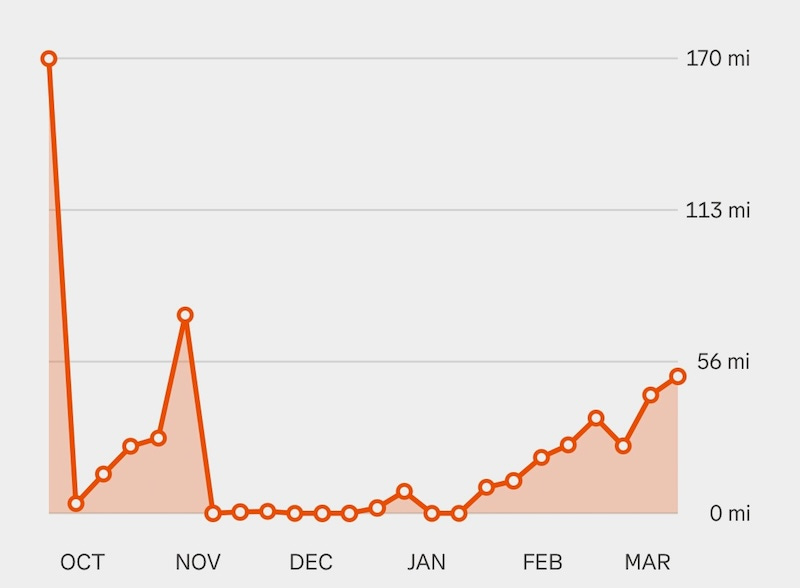

Glad to hear training is going well. I've always wanted to try a running camp. I love the idea of them, but it makes me feel like I'd be taking this "hobby" way too seriously.
This sounds like an incredible camp experience! I have been hesitant to explore training camps as a slower runner but this one seems more inclusive which is great. And I always love Sedona running — very jealous that you got to experience it in the snow as I have wanted to do that but haven’t gotten the chance yet!